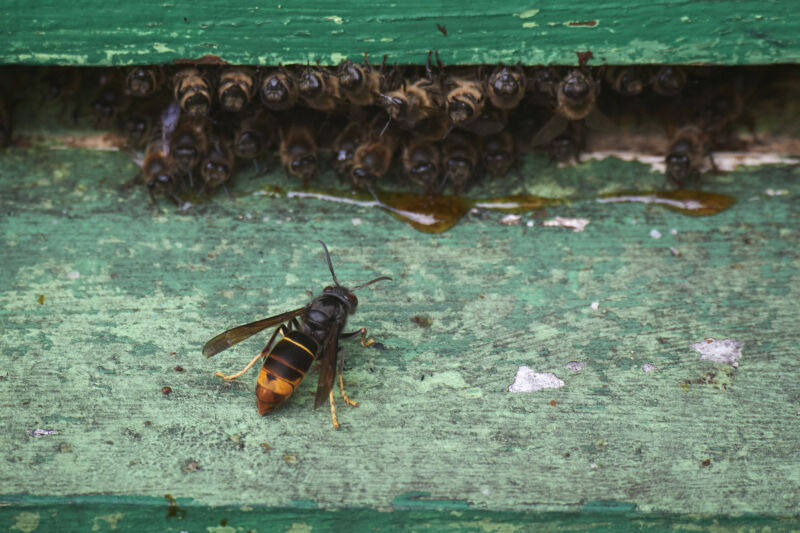
Enlarge / 2023 marked the first sighting of a yellow-legged hornet in the United States, sparking fears that it may spread and devastate honeybees as it has in parts of Europe. (credit: Miguel Riopa/AFP via Getty Images)
In early August 2023, a beekeeper near the port of Savannah, Georgia, noticed some odd activity around his hives. Something was hunting his honeybees. It was a flying insect bigger than a yellowjacket, mostly black with bright yellow legs. The creature would hover at the hive entrance, capture a honeybee in flight, and butcher it before darting off with the bee’s thorax, the meatiest bit.
“He’d only been keeping bees since March… but he knew enough to know that something wasn’t right with this thing,” says Lewis Bartlett, an evolutionary ecologist and honeybee expert at the University of Georgia, who helped to investigate. Bartlett had seen these honeybee hunters before, during his PhD studies in England a decade earlier. The dreaded yellow-legged hornet had arrived in North America.
With origins in Afghanistan, eastern China, and Indonesia, the yellow-legged hornet, Vespa velutina, has expanded during the last two decades into South Korea, Japan, and Europe. When the hornet invades new territory, it preys on honeybees, bumblebees, and other vulnerable insects. One yellow-legged hornet can kill up to dozens of honeybees in a single day. It can decimate colonies through intimidation by deterring honeybees from foraging. “They’re not to be messed with,” says honeybee researcher Gard Otis, professor emeritus at the University of Guelph in Canada.



0 Comments